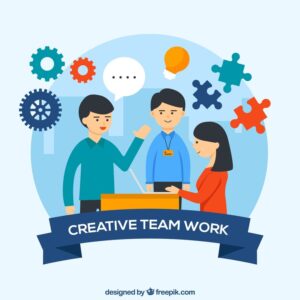Strategies for Dealing with Legal Challenges and Labor Legislation in Small and Medium-Sized Enterprises
Introduction
In today’s dynamic business landscape, small and medium-sized enterprises (SMEs) face numerous legal strategies and complexities related to labor legislation. Navigating through these legal intricacies while ensuring compliance is essential for the success and sustainability of SMEs. This article provides comprehensive insights into effective strategies for managing legal challenges and labor legislation in SMEs, offering expert advice and practical solutions.
Understanding Legal Challenges
Navigating legal challenges is a crucial aspect of running a small or medium-sized enterprise. These challenges encompass various areas, including contract law, intellectual property rights, employment law, and regulatory compliance. SMEs must proactively address these challenges to mitigate risks and ensure legal compliance.
Contract Law and Compliance
Contract law forms the backbone of business transactions and relationships. SMEs must draft, review, and negotiate contracts meticulously to protect their interests and minimize legal risks. Ensuring compliance with contractual obligations and legal requirements is paramount for maintaining trust and fostering strong business partnerships.
Intellectual Property Protection
Intellectual property (IP) rights play a vital role in safeguarding SMEs’ innovations, inventions, and brand assets. Implementing robust IP protection strategies, such as trademarks, patents, and copyrights, can help SMEs protect their intellectual assets from infringement and unauthorized use.
Compliance with Labor Legislation
Compliance with labor legislation is essential for SMEs to foster a fair and inclusive workplace environment while adhering to legal requirements. From employment contracts to workplace safety regulations, SMEs must prioritize compliance to avoid potential legal disputes and penalties.
Employee Contracts and Rights
Drafting comprehensive employment contracts that outline rights, responsibilities, and benefits is crucial for SMEs. Ensuring compliance with labor laws regarding minimum wage, working hours, and employee benefits is essential for maintaining a harmonious employer-employee relationship.
Workplace Safety and Health Regulations
Creating a safe and healthy work environment is a legal obligation for SMEs. Compliance with workplace safety regulations, such as Occupational Safety and Health Administration (OSHA) standards, is imperative for preventing accidents, injuries, and potential legal liabilities.
Strategic Approaches to Addressing Legal Challenges
Effectively managing legal challenges and labor legislation requires SMEs to adopt proactive and strategic approaches. By implementing the following strategies, SMEs can navigate legal complexities and mitigate risks effectively:
Proactive Legal Risk Assessment
Conducting regular legal risk assessments allows SMEs to identify potential legal vulnerabilities and areas of non-compliance. By addressing these issues proactively, SMEs can minimize legal risks and protect their interests.
Legal Counsel and Advisory Services
Seeking guidance from experienced legal professionals and advisory services can provide SMEs with valuable insights and expertise. From contract negotiations to regulatory compliance, legal counsel can offer tailored solutions to address specific legal challenges.
Employee Training and Awareness Programs
Investing in employee training and awareness programs on legal rights, responsibilities, and compliance requirements is essential for SMEs. By educating employees about relevant labor laws and regulations, SMEs can foster a culture of compliance and minimize legal risks.
FAQs (Frequently Asked Questions)
What are the primary legal challenges faced by small and medium-sized enterprises?
Small and medium-sized enterprises encounter various legal challenges, including contract law issues, intellectual property protection, and compliance with labor legislation.
How can SMEs ensure compliance with labor legislation?
SMEs can ensure compliance with labor legislation by drafting comprehensive employment contracts, prioritizing workplace safety and health regulations, and providing employee training on legal rights and responsibilities.
Why is legal compliance essential for SMEs?
Legal compliance is crucial for SMEs to mitigate risks, protect their interests, and maintain trust with stakeholders. Non-compliance can lead to legal disputes, penalties, and reputational damage.
What role does legal counsel play in managing legal challenges?
Legal counsel provides SMEs with expert guidance on navigating legal complexities, negotiating contracts, and ensuring compliance with relevant laws and regulations.
How can SMEs conduct effective legal risk assessments?
SMEs can conduct legal risk assessments by identifying potential vulnerabilities, evaluating compliance with legal requirements, and implementing corrective measures to mitigate risks.
What are some common workplace safety regulations SMEs need to comply with?
Common workplace safety regulations include OSHA standards, emergency preparedness requirements, and guidelines for hazardous materials handling.
Conclusion
Effectively managing legal challenges and labor legislation is vital for the success and sustainability of small and medium-sized enterprises. By implementing proactive strategies, seeking expert guidance, and prioritizing compliance, SMEs can navigate legal complexities with confidence and ensure long-term growth and prosperity.































